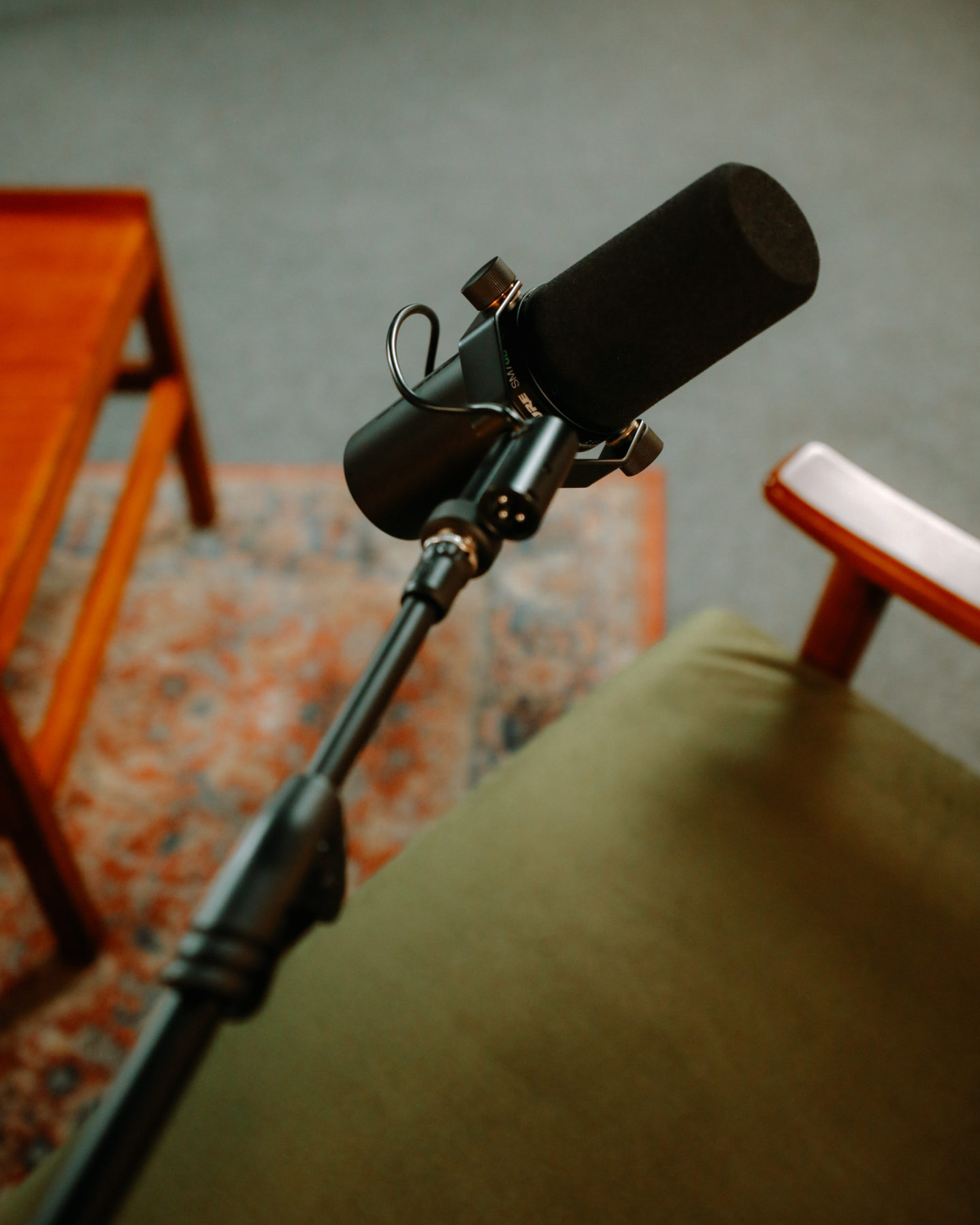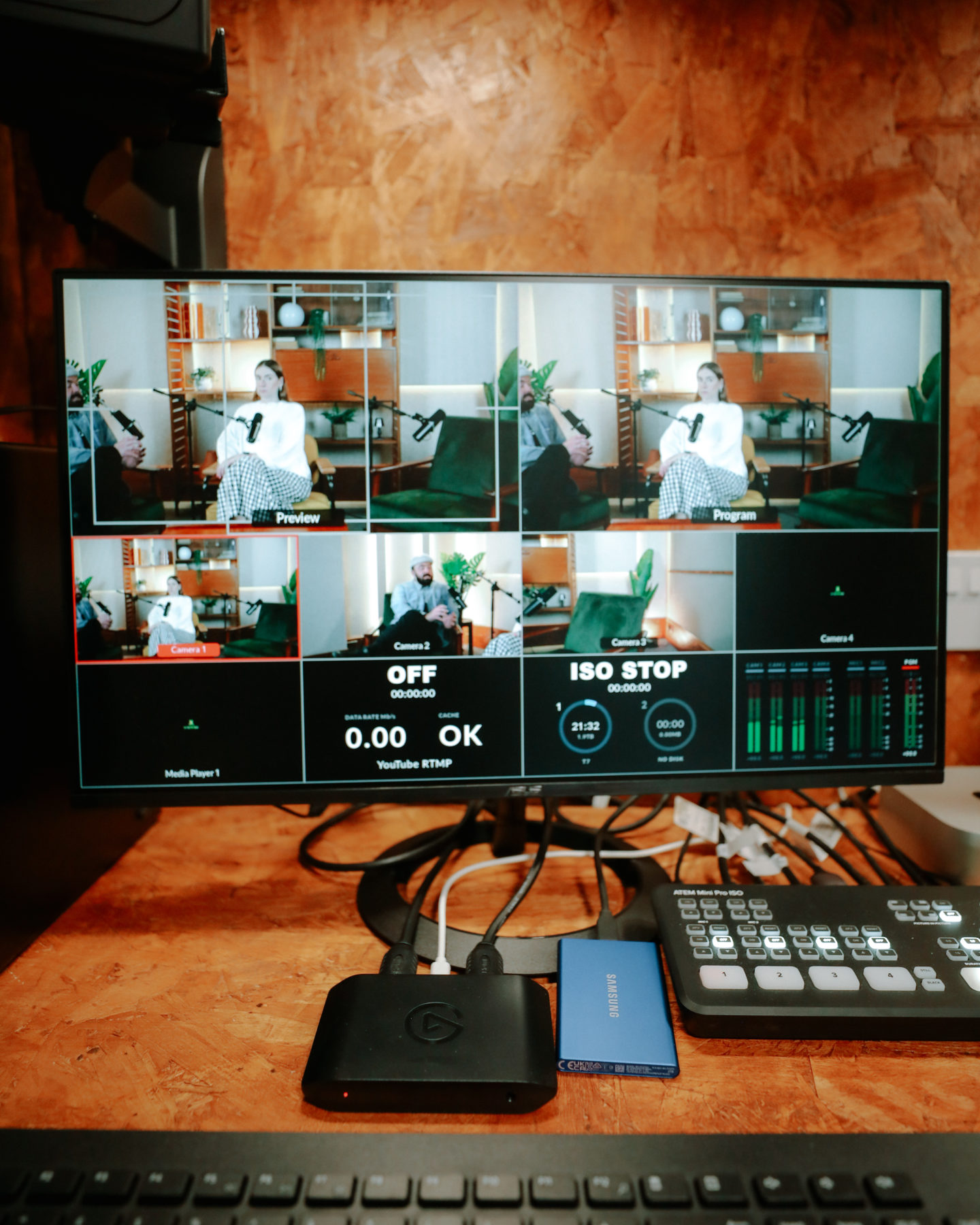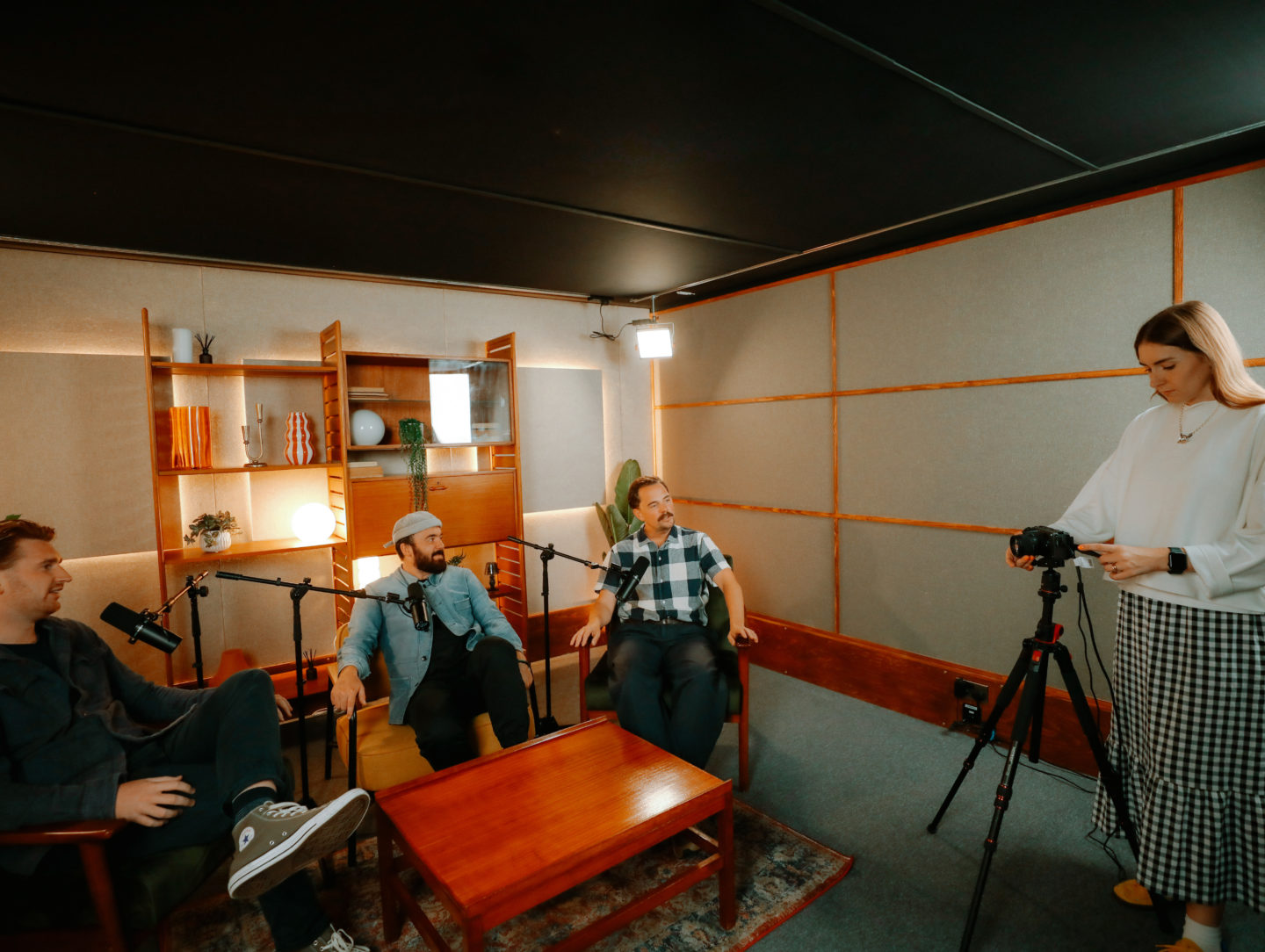Hiring a proper podcast studio won’t guarantee you success, but it will tackle the key failure points.
By Jon O'Donnell
1. Sound does matter
Yes, a decent USB mic in a quiet bedroom can be “good enough” for part of your audience. But research shows audio quality directly affects trust and credibility: the same content was judged as less credible and the speaker less competent when the sound was poor.*
Listeners will tolerate average sound, but a recent survey found that 37% of listeners prefer broadcast-quality audio — that’s too many to ignore**. Spotify’s retention data also shows production quality is a big factor in early drop-off.
And let’s be honest: there’s far less chance of the dog, child, or DPD driver interrupting your “Big Interview” in a studio.

2. Podcasts are now a visual medium
I used to be told I had a face for radio. Unfortunately, in today’s video-driven world, I’m not sure even that’s true anymore.
With YouTube now accounting for over a third of all podcast consumption, and Spotify hosting nearly 500,000 video podcasts globally (double last year), visuals have become part of the ecosystem. Even audio-first shows rely on video clips to drive discovery on TikTok, Instagram, YouTube Shorts, or LinkedIn.
That means lighting, set design, framing, and camera quality are as important as the mic. And replicating pro lighting rigs, multi-cam setups, and branded backdrops at home just isn’t cost-effective. Not to mention, good cameras are bloody expensive.
3. Reduce risk, gain expertise
There are a billion ways to ruin a recording: forgetting to hit record (did that), leaving an SD card unformatted (that too), or discovering a low fridge hum only after hours of editing (no comment).
Studios don’t just provide the kit; they provide engineers and producers who’ve seen every mistake in the book. They know where problems hide and how to fix them before you notice. They bring backup recorders, clean signal chains, and discipline that stops firefighting.
Your investment in studio time comes with years of other people’s f*** ups, so you don’t have to make them yourself.

4. Purpose and focus
Walking into a studio creates intent. It nudges hosts and guests to prepare more thoughtfully, perform more intentionally, and treat the session like an occasion. That atmosphere lifts the energy and sharpens the end product.
If you feel like a pro, you act like a pro. And no self-respecting podcaster wants a pro in the bedroom.
5. And finally….it’s not a cost, it’s an investment.
Here’s the truth: a professional podcast should serve one of four clear goals: grow your audience, attract new customers, strengthen your brand, or generate revenue. If it doesn’t do one (or more) you should probably ask why you’re making one at all.
Seen that way, studio spend isn’t a cost, it’s a lever for growth. Every pound invested in quality production is a pound invested in your credibility, growth, and longevity. And ultimately, your vision.
Final thought
A studio won’t hand you a hit podcast, but it will take out the most common failure points: poor sound, weak visuals, preventable mistakes, lack of focus, and half-baked production. In a world overflowing with shows hungry for attention, that edge matters.
So what are you waiting for? If you’re serious about making a podcast that builds your brand, grows your audience, and actually lasts—switch off the bedroom light, walk out of the spare room, and head straight to a professional studio.
Better still… click here to find your new favourite.
*Source: Schwarz & Newman, Science Communication (2018), “Good Sound, Good Research: How Audio Quality Influences Perceptions of the Research and Researcher.”
** Source: The Podcast Host (2024) – Podcast Discovery Stats: 63% of listeners accept
“good enough” audio, while 37% prefer broadcast-level quality (BBC/NPR).
